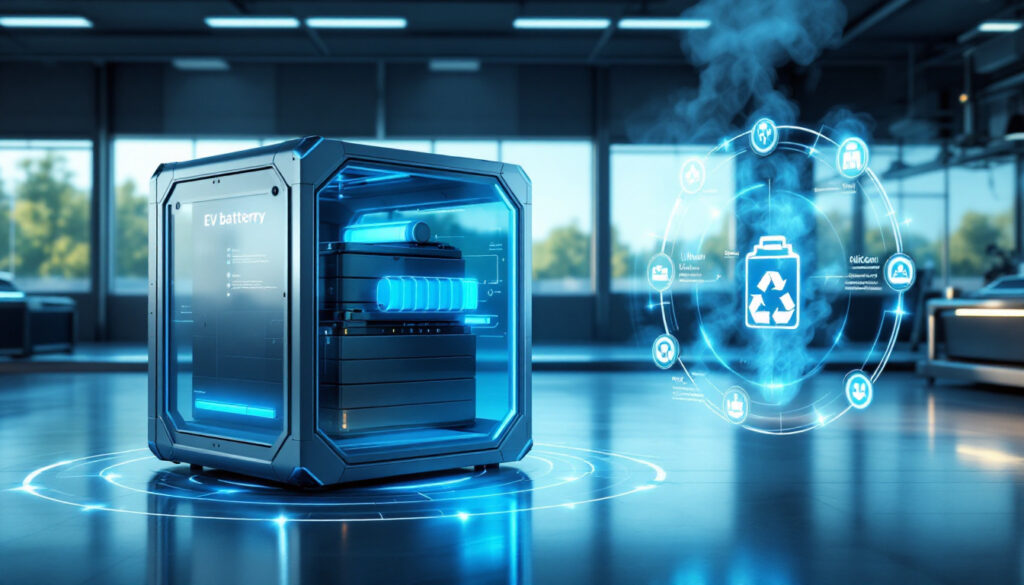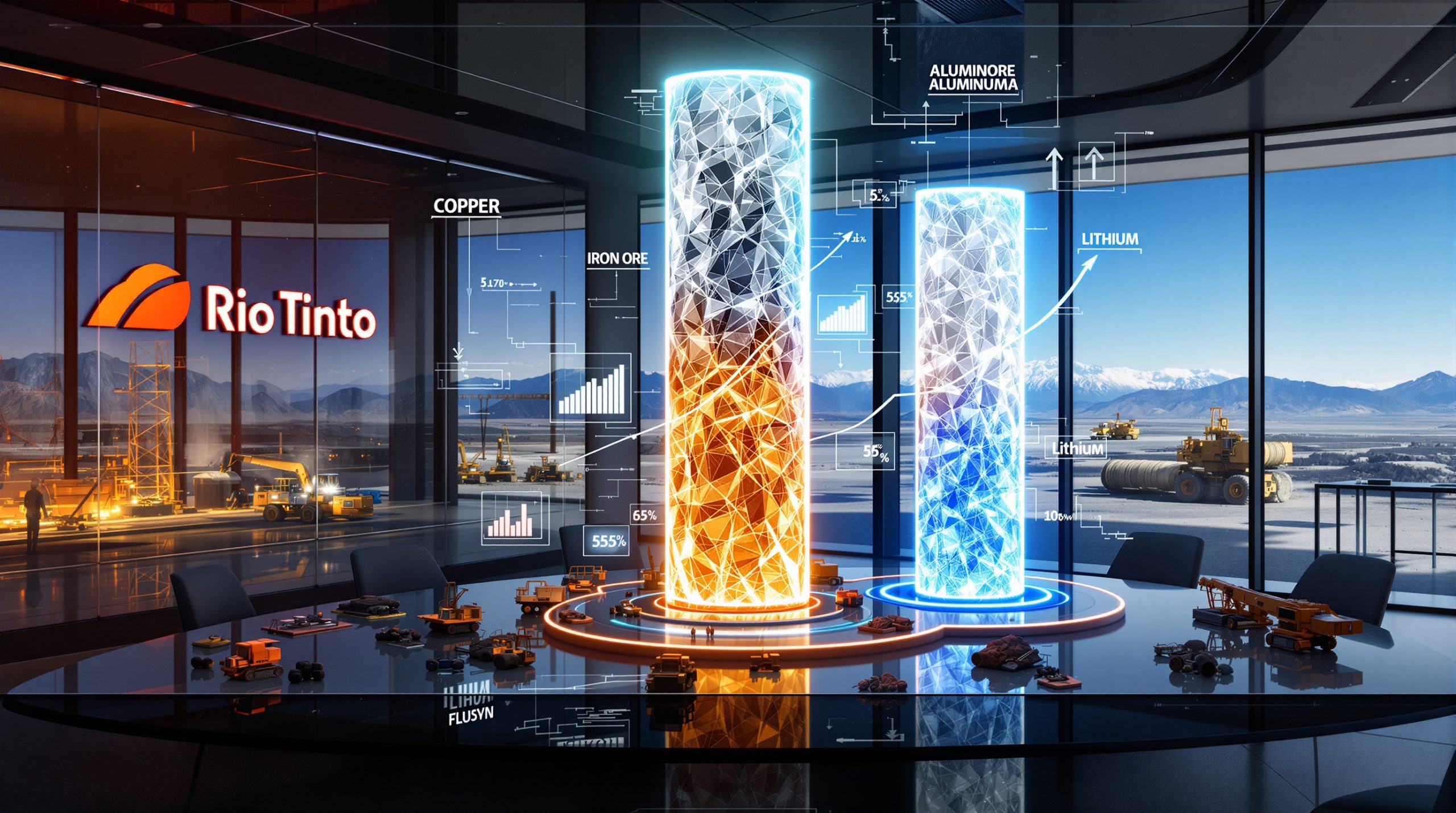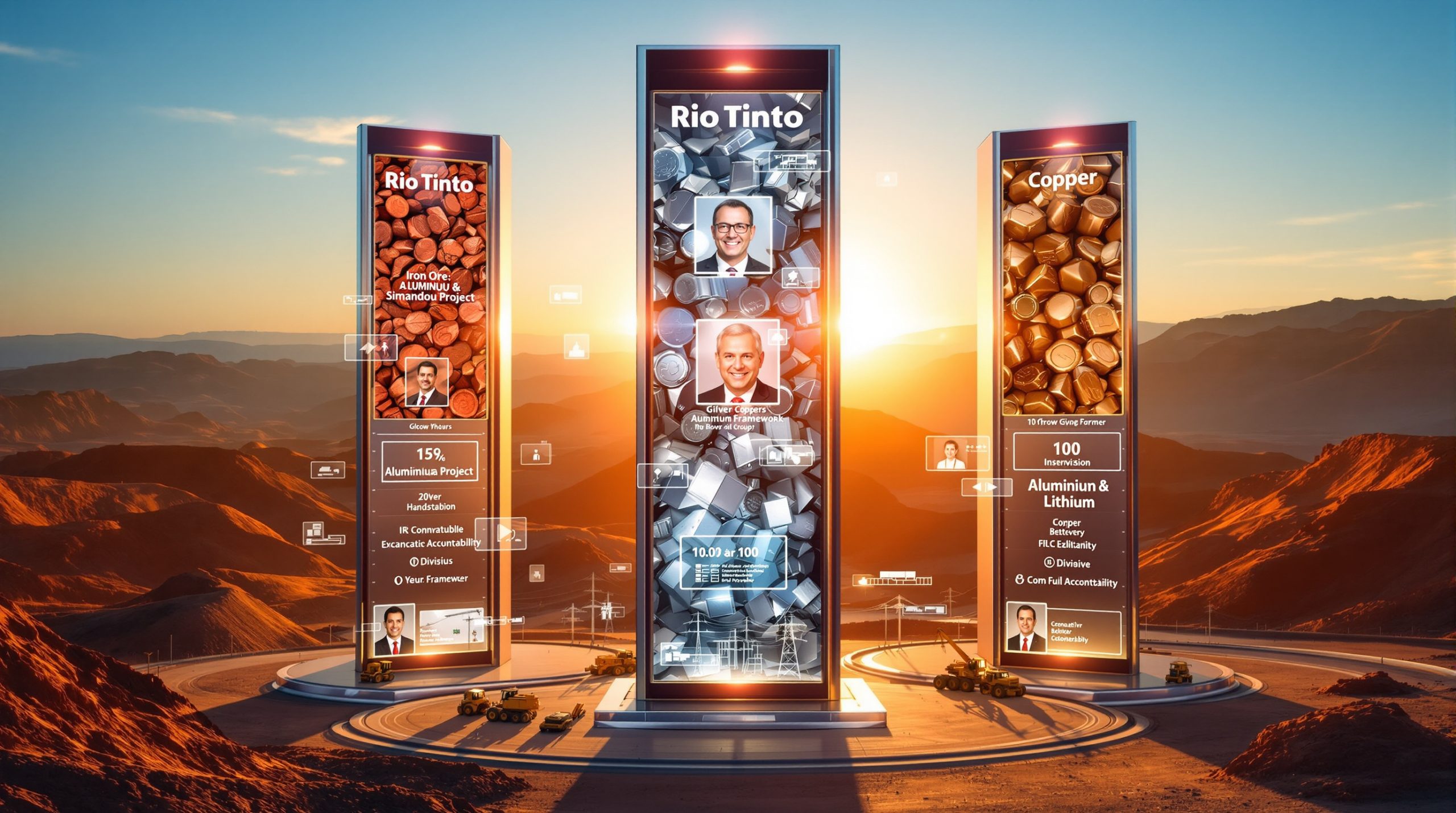Fortum's Battery Box: Revolutionizing EV Battery Recycling Logistics
Fortum's Battery Box, launched in May 2025 in Germany and Finland, represents a transformative approach to lithium-ion EV battery recycling. This certified safety container system simplifies the logistics of collecting and transporting end-of-life batteries while ensuring compliance with the EU Battery Regulation (BATT2). By integrating digital tracking, automated documentation, and scalable infrastructure, Fortum addresses critical challenges in hazardous waste management, enabling higher material recovery rates (up to 95%) and supporting Europe's circular economy goals. The service, priced at approximately €1,500 per container in Germany, combines regulatory adherence with operational efficiency, positioning Fortum as a leader in sustainable battery recycling.
The Battery Box Innovation: Revolutionizing EV Battery Collection
Breakthrough in Lithium-Ion Battery Recycling Logistics
Fortum's Battery Box emerged as a direct response to stringent EU regulations mandating increased recycling rates and material traceability under BATT2. Launched in May 2025, the system targets the projected surge in EV battery waste, expected to exceed 500,000 tonnes annually in Europe by 2030. The containers are engineered to withstand thermal runaway risks, with reinforced structures and leak-absorbent materials certified under international dangerous goods standards.
The innovative design addresses a critical gap in the EV ecosystem, providing a standardized solution for handling hazardous battery materials. With electric vehicle adoption accelerating across Europe, the Battery Box creates a scalable infrastructure that can grow alongside increasing disposal volumes.
Key Features and Capabilities of the Battery Box System
The Battery Box system combines physical safety features with digital intelligence. Each container incorporates specialized containment technology that isolates damaged cells and prevents contamination. The digital tracking platform provides stakeholders with real-time visibility throughout the recycling journey, from collection through processing.
IoT sensors integrated within each Battery Box monitor temperature and structural integrity during transit, alerting transporters to potential issues before they escalate. This combination of physical and digital safeguards significantly reduces the risk of thermal events during the critical transportation phase.
The automated documentation system eliminates manual paperwork through streamlined regulatory reporting. This reduces administrative overhead by approximately 30% compared to traditional waste management processes, making compliance more accessible for businesses of all sizes.
How Does the Battery Box Service Work?
The Complete Battery Recycling Journey
Customers begin by accessing Fortum's online platform to schedule Battery Box deliveries. In major German markets, containers typically arrive within 48 hours of ordering. Upon delivery, automotive service centers, dealerships, or recycling facilities can safely store end-of-life batteries in the specialized containers.
Once filled, customers schedule a pickup through the same digital portal. Fortum's certified transportation partners collect the containers and deliver them to the nearest battery recycling facility. Throughout this journey, the digital platform tracks chain-of-custody, ensuring regulatory compliance and providing customers with real-time updates.
Upon completion of the recycling process, Fortum issues official certificates documenting proper disposal and material recovery percentages. These certificates satisfy regulatory requirements and support corporate sustainability reporting.
Cost Structure and Accessibility
The Battery Box service operates on a transparent pricing model with single container costs starting at approximately €1,500 in Germany. For businesses with higher disposal volumes, Fortum offers volume-based discounts of up to 10% for orders exceeding five containers.
This pricing structure makes proper battery disposal more economically viable than potential regulatory fines, which can exceed €10,000 per violation under BATT2. The service also reduces internal costs associated with hazardous material handling training and specialized storage facilities.
Flexible scheduling options accommodate seasonal fluctuations in battery disposal volumes, allowing businesses to scale their recycling operations without significant capital investment in specialized equipment or facilities.
Why is the Battery Box Essential for Modern EV Ecosystems?
Solving Critical Industry Challenges
The EV industry faces growing challenges in managing end-of-life batteries safely and efficiently. The Battery Box addresses these issues by simplifying the complex logistics of handling potentially hazardous materials. Its standardized design ensures consistent safety protocols across different collection points, reducing the need for specialized training.
By providing a certified containment solution, Fortum significantly reduces safety risks throughout the battery collection process. Traditional waste management systems were not designed for the unique challenges of lithium-ion batteries, which can experience thermal runaway if damaged or improperly handled. The Battery Box's reinforced structure and specialized materials mitigate these risks.
The system's digital platform ensures compliance with increasingly stringent EU regulations by automatically generating required documentation. This simplifies regulatory adherence for businesses that may lack specialized knowledge of battery disposal requirements.
Environmental and Economic Benefits
The Battery Box facilitates recovery rates of up to 95% for valuable battery materials, substantially exceeding current EU mandates. This high recovery percentage supports circular economy principles by returning critical materials to the manufacturing supply chain.
Recycling lithium through Fortum's process emits 74% less CO₂ than primary extraction, making a significant contribution to carbon reduction goals. As battery production scales to meet growing EV demand, the ability to recirculate existing materials becomes increasingly important for environmental sustainability.
The system also reduces dependency on newly mined battery materials, many of which come from regions with geopolitical complications or environmental concerns. By enabling efficient material recovery within Europe, Fortum contributes to continental resource security and energy autonomy.
How Does Fortum's Battery Recycling Infrastructure Support the Battery Box?
European Processing Network
The Battery Box system is supported by Fortum's comprehensive processing infrastructure, centered around the Kirchardt facility in Germany. Operational since 2023, this plant processes over 3,000 tonnes of lithium-ion batteries annually, forming the backbone of Fortum's pan-European recycling network.
The facility employs robotic disassembly lines capable of processing 10 battery packs hourly, reducing manual labor requirements by 80% compared to traditional recycling methods. This automation in mining technology improves both safety and efficiency in the initial processing phase.
After preliminary processing in Germany, recovered black mass is shipped to Harjavalta, Finland, for advanced hydrometallurgical treatment. This specialized facility uses solvent extraction techniques to isolate high-purity metals suitable for reintroduction into battery manufacturing.
Despite local opposition citing environmental concerns, Fortum has announced plans for a second German facility to accommodate growing volumes. This expansion would increase the company's processing capacity by an additional 5,000 tonnes annually by 2027.
Proprietary Technology Advantages
Fortum's competitive edge stems from its proprietary low-emission processing methodology, developed through extensive research. Unlike traditional pyrometallurgical approaches that rely on energy-intensive smelting, Fortum employs mechanical and chemical processes that consume significantly less energy.
As Tero Holländer, Fortum's Head of Business Line Batteries, explains: "Our proprietary methods prioritize material purity, ensuring recycled metals meet OEM specifications for reuse." This focus on quality enables direct reintegration of recovered materials into new battery production.
The company has developed specialized recovery techniques for critical metals including lithium, cobalt, and nickel. Their hydrometallurgical process achieves purity levels exceeding 99.5% for these materials, satisfying the stringent requirements of battery manufacturers.
Fortum's advanced material separation processes maximize recovery rates by treating various battery chemistries through adaptable process flows. This flexibility future-proofs their operations against evolving battery technologies and chemistries.
How Does the Battery Box Address EU Battery Regulation Requirements?
Meeting BATT2 Compliance Mandates
The Battery Box directly supports Article 12 of BATT2, which mandates standardized collection systems and material passports for batteries placed on the European market. By 2030, EU regulations will require 50% recycled cobalt and nickel content in new batteries, a target achievable through Fortum's closed-loop system.
Current EU targets mandate 70% lithium recovery by 2030, while Fortum's process already achieves 95% recovery rates. This positions Battery Box users ahead of regulatory curves, providing a competitive advantage as compliance requirements tighten.
The system facilitates proper documentation for regulatory reporting through its integrated digital platform. Automated record-keeping ensures all battery movements are tracked and reported in accordance with EU waste shipment regulations.
Future-Proofing Battery Management Operations
The Battery Box's adaptable design ensures compatibility with evolving regulatory requirements. As BATT2 implementation phases progress through 2030, the system will receive digital updates to maintain compliance without hardware replacements.
Digital integration enables complete battery lifecycle management, supporting the EU's vision for "battery passports" that track materials from manufacturing through multiple life cycles. This traceability infrastructure will become increasingly valuable as circular economy regulations intensify.
The scalable design can accommodate growing EV battery waste volumes, projected to increase tenfold by 2035 as first-generation electric vehicles reach end-of-life. This scalability protects users from future infrastructure constraints as disposal volumes surge.
What Makes Fortum's Approach to Battery Recycling Stand Out?
Technological Edge in the Recycling Market
Fortum's approach distinguishes itself through research-driven proprietary recycling methodologies that achieve higher material yields than industry averages. While most recyclers focus primarily on cobalt and nickel recovery, Fortum has pioneered economically viable lithium recycling at scale.
The company's focus on high-value critical metal recovery, including rare elements like manganese and graphite, creates additional revenue streams that improve overall economic sustainability. This comprehensive approach maximizes the value extracted from each processed battery.
Integration of digital solutions with physical infrastructure creates a seamless experience for customers while generating valuable data for process optimization. The platform's API capabilities enable enterprise integration, allowing automotive manufacturers to incorporate recycling into their service management systems.
Fortum's emphasis on low-emission processing techniques aligns with carbon reduction goals throughout the battery lifecycle. Their mechanical pre-treatment process uses 40% less energy than traditional shredding methods, according to company data.
Strategic Market Position
Fortum currently processes approximately 15% of Europe's recycled EV batteries, positioning it as a market leader with established infrastructure. This comprehensive pan-European operational footprint includes collection points in 12 countries, providing unmatched geographical coverage.
The company offers end-to-end services from collection to material recovery, eliminating coordination complexities for customers navigating multiple vendors. This vertical integration ensures quality control throughout the recycling journey.
Specialized expertise in hazardous waste management, developed through decades of environmental services experience, provides Fortum with regulatory insights and operational knowledge that new market entrants lack. This institutional knowledge creates significant barriers to entry for competitors.
Fortum's commitment to supporting European energy autonomy aligns with EU strategic priorities, potentially creating favorable regulatory treatment and partnership opportunities with governmental agencies focused on resource security.
FAQ: Battery Box and EV Battery Recycling
What types of batteries can the Battery Box system handle?
The Battery Box is designed specifically for lithium-ion EV batteries, including those from passenger vehicles, commercial fleets, and light electric vehicles. The system accommodates various form factors and chemistries, including NMC (Nickel-Manganese-Cobalt), NCA (Nickel-Cobalt-Aluminum), and LFP (Lithium Iron Phosphate) batteries.
The containers can handle both complete battery packs and individual modules, providing flexibility for different removal scenarios. This adaptability is particularly valuable for service centers dealing with partially damaged systems where only specific modules require replacement.
How does the Battery Box ensure safety during transportation?
Safety is ensured through multiple engineering features. The certified containment design prevents thermal events through specialized internal partitioning that isolates potentially damaged cells. Temperature-resistant materials can withstand up to 1,200°C, containing any thermal runaway within the container.
Specialized absorbent materials line the container interior, neutralizing electrolyte leakage and preventing environmental contamination. The reinforced structure protects against physical damage during loading, transportation, and unloading, maintaining integrity even under impact.
All containers comply with international dangerous goods regulations, including ADR (European Agreement concerning the International Carriage of Dangerous Goods by Road) and IMDG (International Maritime Dangerous Goods) code requirements for Class 9 hazardous materials.
What documentation comes with the Battery Box service?
Fortum provides comprehensive documentation throughout the recycling process. Complete chain-of-custody records track each battery from collection through final processing, maintaining an unbroken record of responsibility.
Official recycling certificates verify proper disposal in accordance with EU waste directives. These certificates include detailed material recovery data, supporting corporate sustainability reporting and regulatory compliance documentation.
The documentation package includes regulatory compliance verification for BATT2 and waste shipment regulations. Material recovery verification details the percentage of materials successfully reclaimed, supporting circular economy metrics and corporate ESG reporting.
How does the service contribute to sustainability goals?
The Battery Box service enables efficient recovery of up to 95% of battery materials, significantly exceeding current regulatory requirements. This high recovery rate returns critical materials to the supply chain, reducing pressure on primary extraction.
By utilizing Fortum's low-emission processing methods, the service reduces carbon footprint by 74% compared to primary material extraction. This supports corporate carbon reduction goals and improves the lifecycle environmental performance of EVs.
The system supports circular economy principles in battery supply chains by completing the material loop from production through reuse. Material traceability features help companies meet corporate sustainability targets and ESG reporting requirements through sustainable mining practices.
The Future of EV Battery Recycling: Beyond the Battery Box
Emerging Trends and Innovations
The next evolution in battery recycling will likely see integration of AI for optimized processing. Fortum is developing machine learning algorithms to identify optimal recycling pathways for different battery chemistries, potentially increasing material yields by an additional 3-5%.
Development of battery passport systems will enhance material traceability throughout multiple lifecycles. Fortum's digital platform provides the foundation for these expanded tracking capabilities, which will become mandatory under EU regulations by 2027.
Industry collaboration is driving standardization of battery design to improve recyclability. Current designs prioritize performance and manufacturing efficiency over end-of-life considerations, but regulatory pressure is shifting this balance toward designs that facilitate disassembly and material separation.
Automation of disassembly and material separation continues to advance, with Fortum testing robotic systems capable of identifying and sorting different battery components with 99% accuracy. These systems will further reduce human exposure to potentially hazardous materials while improving processing efficiency.
Market Growth and Industry Evolution
The EV battery recycling market is projected to grow exponentially, with battery waste volumes expected to reach 700,000 tonnes annually in Europe by 2030. This represents a fifteen-fold increase from 2023 levels, requiring massive infrastructure expansion.
Demand for recovered battery materials in new production will intensify as manufacturers work to meet recycled content mandates. By 2030, battery producers will need to incorporate 12% recycled cobalt, 4% lithium, and 4% nickel into new cells under EU regulations.
Recycling infrastructure will continue expanding across European markets, with Fortum planning investments exceeding €200 million in new facilities by 2028. This expansion aims to create a recycling capacity buffer that can accommodate projected waste volumes.
Regulatory frameworks will evolve to further support the circular battery economy, likely including landfill bans for lithium-ion batteries and mandatory recycling through certified providers like Fortum. These changes will drive adoption of solutions like the Battery Box as businesses seek compliance with tightening regulations while also realizing significant decarbonisation benefits and leveraging recent battery recycling breakthrough technologies.
Further Exploration:
Readers interested in learning more about innovations in EV battery recycling can also explore related educational content from Battery Industry, which offers additional perspectives on developments in sustainable battery management solutions.
Want to Invest in the Next Major Mineral Discovery?
Discovery Alert's proprietary Discovery IQ model instantly notifies investors of significant ASX mineral discoveries, transforming complex data into actionable insights for both short-term traders and long-term investors. Explore why historic discoveries can generate substantial returns by visiting Discovery Alert's dedicated discoveries page and begin your 30-day free trial today.




